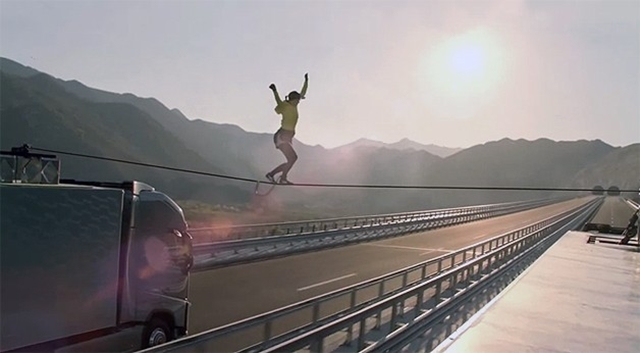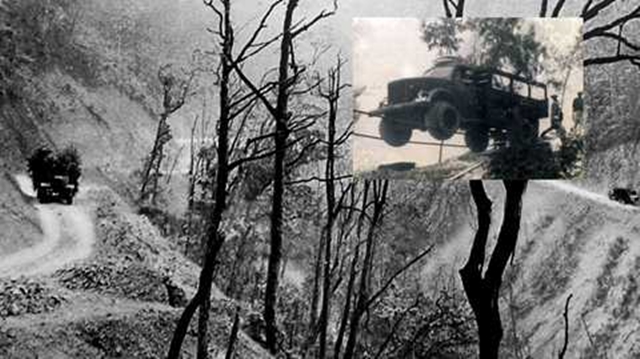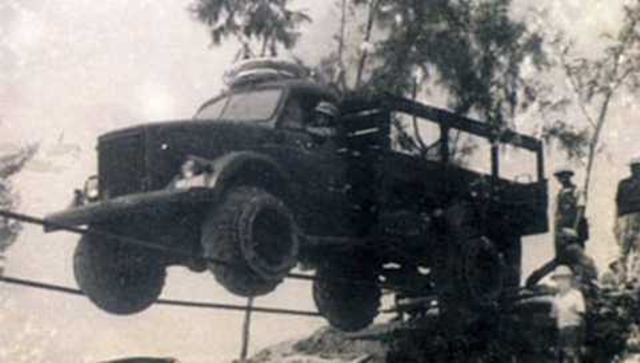Western action movies often feature daring stunts like tightrope walking, captivating audiences. Similarly, circus acts showcasing such feats draw large crowds. However, in Vietnam, extraordinary events like this occurred without any safety gear or support equipment. Remarkably, tightrope walking was not a performance for spectators, but a means of transportation during the war against the Americans.

Illustrative image
In 1965, Lieutenant General Đinh Đức Thiện, serving as the Chief of the General Department of Logistics, was sent by the Ministry of Defense to China on official business. While there, he was taken to see a cable bridge. Although referred to as a bridge, it was essentially just a cable stretched between two mountains, a concept that originated during the fight against the Japanese.
Upon returning to Vietnam, General Thiện presented this idea to the Institute of Transport Engineering. At that time, several prestigious units collaborated on the research, including all four universities in Hanoi. Thus, the unique method of transportation using cable bridges officially emerged on the Ho Chi Minh Trail.

Archival photo
The first person to drive on the cable bridge was Nguyễn Trọng Quyến, who was then a teacher in the motorcycle department at the Logistics Officer School. The initial testing ground was the Diễn Bridge area, spanning the Nhuệ River.
Mr. Quyến recounted to the press that the concrete pillars were driven into the ground about 5-6 meters deep, with cables attached using a winch. The cables needed to be as thick as a wrist, stretched from one riverbank to the other, with a specific sag calculated by the engineers. The Soviet cargo truck he drove ran on pulleys on the cables, resembling a train on tracks. While one might think that having pulleys would make it easy to glide across, the cable bridge actually swayed significantly, making the journey quite challenging.
In June 1965, the final test took place in Canh Diễn, about 1 km from Diễn Bridge on the Nhuệ River. This time, the Deputy Prime Minister and Minister of Transport, Phan Trọng Tuệ, along with other government council members and department heads, were present.
As they reached a quarter of the way across the cable, Mr. Quyến and his co-driver, Nguyễn Văn Xây, sensed something was wrong. Despite waving flags to signal a jump, they couldn’t escape in time and fell into the river with the truck. Fortunately, the vehicle’s doors were tightly shut, so water only slowly filled the cabin. Eventually, when the pressure inside equalized with the outside, they managed to kick the door open and escape.

Archival photo
The failure of that attempt was not due to Mr. Quyến’s driving skills but because the concrete pillar had tilted due to rain, and the truck could not handle the weight while swaying in the wind, causing the cable to sag and leading to the fall.
Finally, on November 11, 1965, a decisive and successful test was conducted. The government approved the installation of cable bridges for vehicles to cross using pulleys. The first cable bridge was established at Km 0 (Đắc Krông, Quảng Trị). Subsequently, similar bridges appeared along the Ho Chi Minh Trail, greatly facilitating the transportation of equipment and supplies from the rear to the front lines. To this day, the stories of these cable bridges and the trucks traversing them continue to astonish and impress the world.